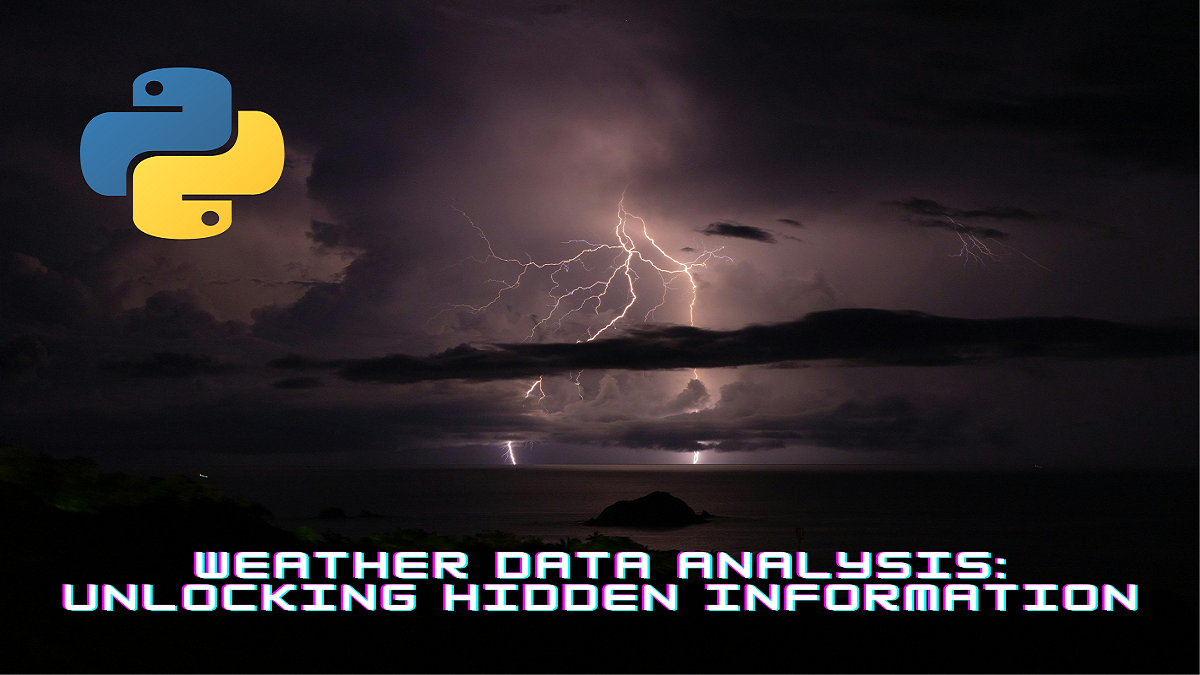The analysis of weather data is crucial to understanding and forecasting weather patterns, which aids in making decisions in a variety of fields like aviation, agriculture energy, public security. Python is a powerful programming language, thanks to its robust libraries and flexible syntax has been a top choice to process and analyze weather data.
Here’s a method for processing and analyzing data for the Python Weather Data Analysis task:
Python Script for Weather Data Analysis:
pythonCopy code
import pandas as pd
from datetime import datetime
# Read data from multiple sources (assuming CSV files for each city)
def read_data(file_paths):
data_frames = []
for file_path in file_paths:
data_frames.append(pd.read_csv(file_path)) # Read CSV files
return pd.concat(data_frames) # Concatenate data frames
# Calculate average daily temperature for each city
def calculate_average_daily_temperature(data):
data['Date'] = pd.to_datetime(data['Date']) # Convert 'Date' column to datetime
data['Day'] = data['Date'].dt.day # Extract day
data['Month'] = data['Date'].dt.month # Extract month
daily_avg_temp = data.groupby(['City', 'Month', 'Day'])['Temperature'].mean().reset_index()
return daily_avg_temp.groupby(['City', 'Month'])['Temperature'].mean()
# Identify city with the largest temperature variation in a month
def identify_city_largest_variation(data):
data['Date'] = pd.to_datetime(data['Date'])
data['Month'] = data['Date'].dt.month
monthly_temp_var = data.groupby(['City', 'Month'])['Temperature'].agg(lambda x: x.max() - x.min())
max_variation = monthly_temp_var.max()
city_with_max_var = monthly_temp_var[monthly_temp_var == max_variation].index[0]
return city_with_max_var, max_variation
# Example usage:
file_paths = ['city1_data.csv', 'city2_data.csv', 'city3_data.csv'] # Replace with actual file paths
all_data = read_data(file_paths)
avg_daily_temp = calculate_average_daily_temperature(all_data)
print("Average daily temperature for each city and month:")
print(avg_daily_temp)
city_max_var, max_var = identify_city_largest_variation(all_data)
print("\nCity with the largest temperature variation in a month:", city_max_var, "with variation of", max_var, "degrees")Scaling the Solution for Real-Time Data Processing:
Scaling the solution for real-time data from hundreds of sensors entails
Data Processing Framework:
- Use distributed computing frameworks like Apache Spark or Dask to handle massive amounts of data effectively across clusters.
Data Streaming:
- Implement a streaming architecture (e.g., Apache Kafka) to handle real-time sensor data.
Parallel Processing:
- Use parallel processing skills to handle computations from several sources at the same time.
Optimization:
- Improve data storage and retrieval procedures, including the use of NoSQL databases for quicker data access.
Load Balancing:
- Use load balancing techniques to evenly divide computational demand across different nodes or clusters.
Monitoring and Scalability:
- Configure monitoring tools to track system performance and scalability, allowing for changes as data volume increases.
Incremental Processing:
- Use incremental processing methodologies to update analysis as new data comes, rather than reprocessing whole datasets.
With these techniques in place, the system can manage the real-time processing of data from hundreds of sensors while assuring scalability, throughput, and accuracy in weather data analysis.





